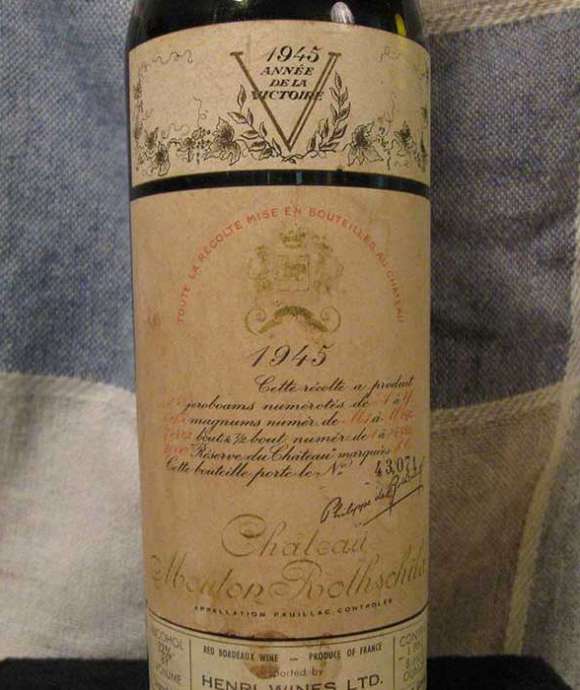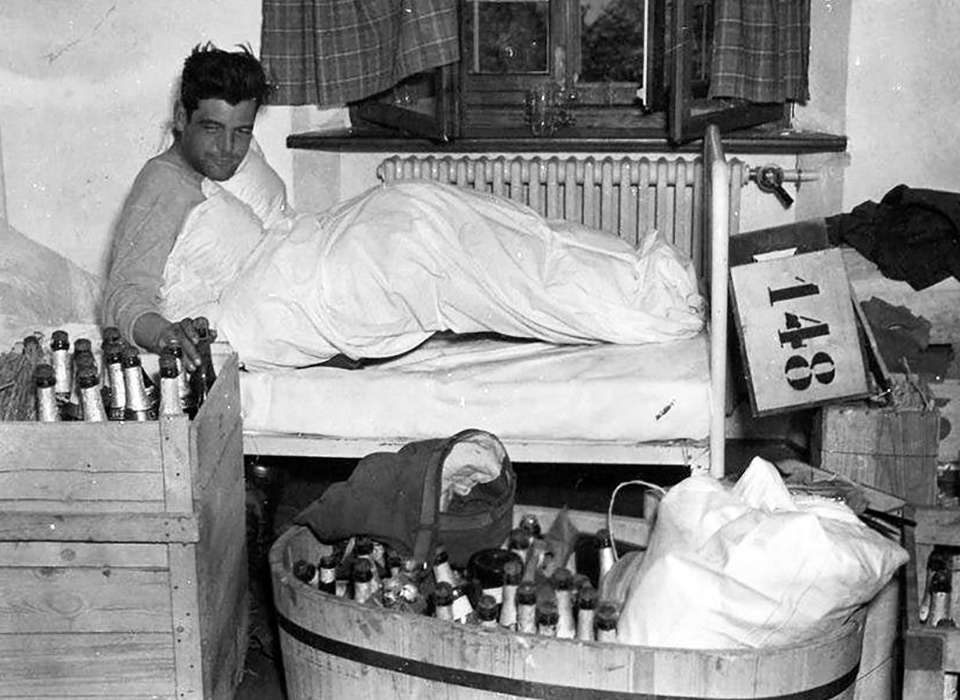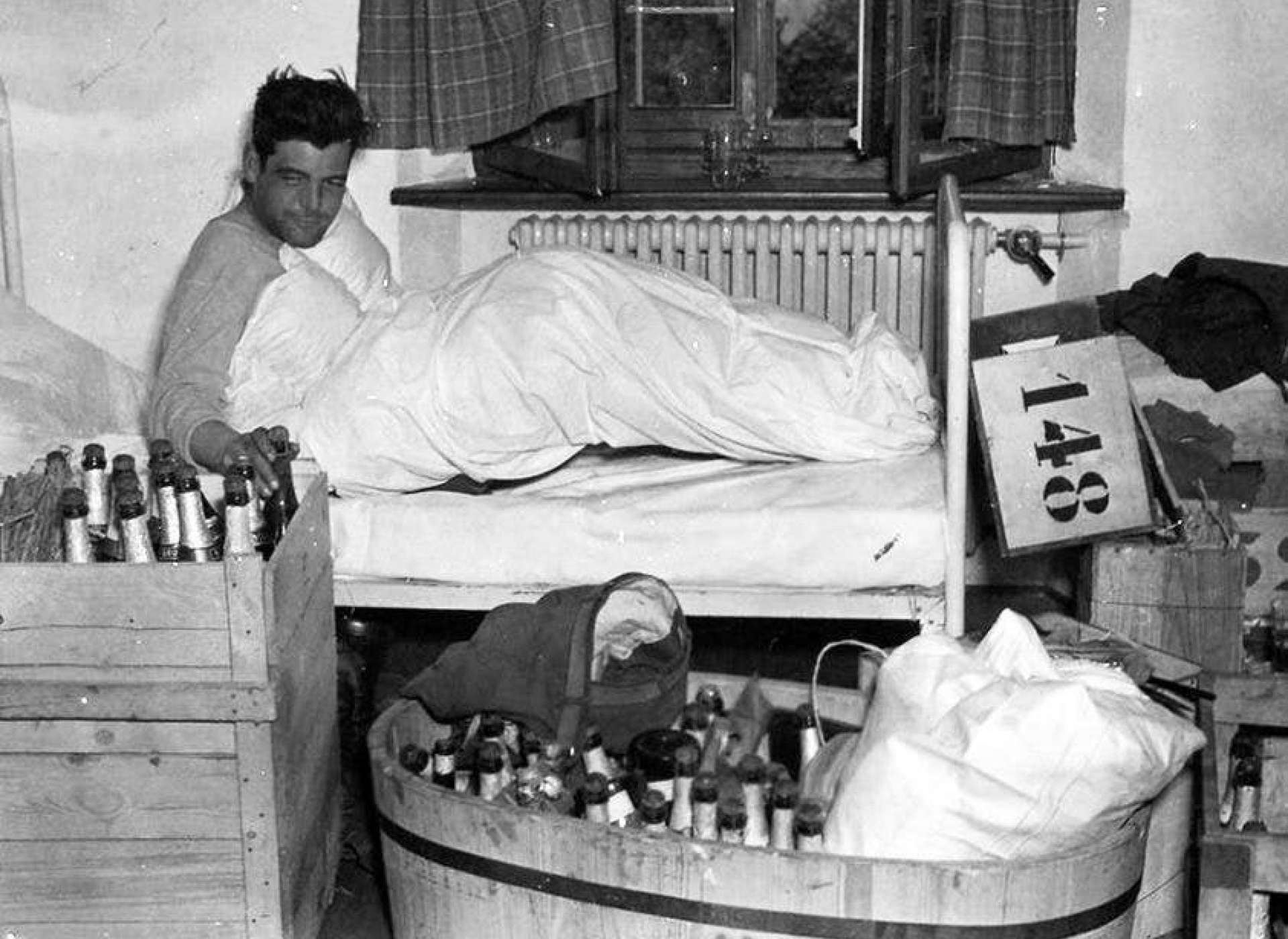On the morning of May 4, 1945, the 506th Parachute Infantry Regiment of the 101st Airborne Division moved out to take a new objective, the Bavarian mountain town of Berchtesgaden. Nestled in the Alps, the quaint little town had been the playground of the Nazi elite.
Situated in the mountains above Berchtesgaden was Obersalzberg, a mountainside retreat where Hitler and top-level henchmen such as Martin Bormann, Albert Speer, and Herman Goering had homes. Rising roughly 3,000 feet above Hitler’s Berghof home was the Eagle’s Nest. The entire area was chock-full of Nazi plunder; gold, jewelry, cash, luxury cars, artwork, and the highest quality liquor and wine in the world.
The Allied Command feared the Germans were planning a “last stand” in the town. To Gen. Eisenhower, it was imperative that Allied Forces secure the Berchtesgaden area before Nazi resistance could organize. To the average GI, Berchtesgaden was simply the juiciest looting opportunity in all of Europe.
The 101st wasn’t the only Allied division ordered to take the town, Gen. LeClerc’s French 2nd Armored Division had orders as well, and was advancing alongside the 101st. Operating in nearby Salzburg, Austria was the US 3rd Infantry Division. Acting on their own initiative, and without orders from SHAEF, the 7th Infantry Regiment from the 3rd ID was also making a dash for Berchtesgaden. The race was on.
The 7th Infantry Regiment of the US 3rd Infantry Division got there first at about 1600 on the afternoon of May 4. They took Berchtesgaden without firing a shot. While the 7th Regiment fanned out through town, a platoon advanced up the mountain to Obersalzberg. When they arrived at the Berghof, Hitler’s home, they discovered the entire area was heavily damaged by a bombing raid conducted by the RAF on April 25.
Even though the buildings in the area were largely destroyed, the men discovered well stocked pantries, still intact, that contained enormous amounts of liquor, wines, cheese, and canned foods. The 3rd ID men popped a few corks and drank in the ruins of the Berghof before heading back down to Berchtesgaden.
The French 2nd Armored Division arrived a little later that afternoon. Early the next morning, the French made the trek all the way up to the Eagle’s Nest, which was untouched by Allied bombing, and made the most fantastic discovery of all: a wine cellar that contained an estimated half million bottles of the finest wine, champagne, and cognac imaginable. Amongst the cache were thousands of bottles of Chateau Lafite Rothschild, one of the most expensive wines in the world. In 2020, buying a bottle of late vintage Chateau Lafite Rothschild would set you back about $1000.
-

Soldiers of the 3rd Infantry Division at the Berghof, May 4, 1945. Photo Courtesy of the National Archives.
-

Captain Lewis Nixon, 2nd Battalion, 506th PIR on the morning of May 8, 1945. Photo Courtesy of the US Army Signal Corps.
The French wanted to take it all. The problem was the elevator in the Eagle’s Nest was disabled by the Germans before they fled. A creative solution to the problem was soon devised. The French brought up medics with their stretchers to carry the stash down the peak of the mountain to a car park below. There, Frenchmen were dumping equipment from their tanks to fit as many cases of the precious cargo as possible. They even dumped the water out of their canteens to fill them with wine.
Last to arrive to the party was the 101st Airborne; they arrived in Berchtesgaden on the morning of May 5. They may have been last, but they were there to stay the longest. The 2nd Battalion, 506th PIR was the lead element of the 101st to arrive, and the officers and men began by securing the finest billets in town. Col. Sink, commander of the 506th, met with the commanding officer of the 7th Infantry Regiment, 3rd ID, and informed him that the 101st was relieving them. SHAEF ordered the 3rd ID men in Berchtesgaden back to their area of operations in Salzburg, Austria.
The 3rd ID didn’t leave empty handed, however. They discovered Reichmarshall Goering’s wine cellar containing 16,000 bottles. They loaded up six trucks with booze and headed back to Austria. Major Dick Winters of the 2nd Battalion, 506th PIR would later recall making the discovery of Goering’s 10,000 bottle wine cellar.
2nd Battalion, 506th PIR, tried to drink the remaining 10,000 bottles, and probably came pretty close to accomplishing that feat. While not the only source of alcohol in town—there were wine cellars everywhere—Goering’s stash was without a doubt, the highest quality booze the paratroopers got their hands on. Goering’s favorite was the opulent Bordeaux from Chateau Lafite Rothschild, and his collection was well stocked with it.
On May 7, the day Germany signed the surrender agreement, the contents of Goering’s wine cellar were distributed to the companies of 2nd battalion, one truckload each. Capt. Lewis Nixon had already selected five truckloads of booze for himself and the other officers of the battalion. The party that ensued was legendary.
Drunk paratroops zipped around town in Mercedes luxury cars, fired off weapons, and celebrated their survival of the war. The next day, the party was still going strong when 2nd battalion received orders to move to Zell am See, Austria, about 30 miles away, for occupation duty. When the convoy pulled out of Berchtesgaden at 2200 that night, the men were singing and still drinking in the back of those trucks. I’ve been trying to come up with a monetary value for 2nd battalion’s bar tab on May 7-8, 1945, but without a complete inventory, I don’t think it’s possible. Suffice to say it would have been extremely high.
It certainly conjures up a great image in my mind: American soldiers who had just defeated the Nazis, still in the prime of their youth, double-fisting $1000 bottles of wine. Who, I ask, is more deserving of a million-dollar hangover than those guys?

Mouton Rothschild and the 1945 "Victory Vintage"
1945 was a turning point for the famous winery of Chateau Mouton Rothschild and the creation of unique tradition: Artists creating wine labels.
This article is part of an ongoing series commemorating the 75th anniversary of the end of World War II made possible by Bank of America.
Larry Decuers
Larry Decuers is a former Curator at The National WWII Museum and veteran of the US Army's 101st Airborne Division.
Cite this article:
MLA Citation:
APA Citation:
Chicago Style Citation:





![Max Fuchs, New York City cantor, sings as Rabbi Sydney [sic] Lefkowitz, Richmond, VA, conducts the first Jewish services from Germany.](/sites/default/files/styles/max_650x650/public/2025-10/image1.jpg)





